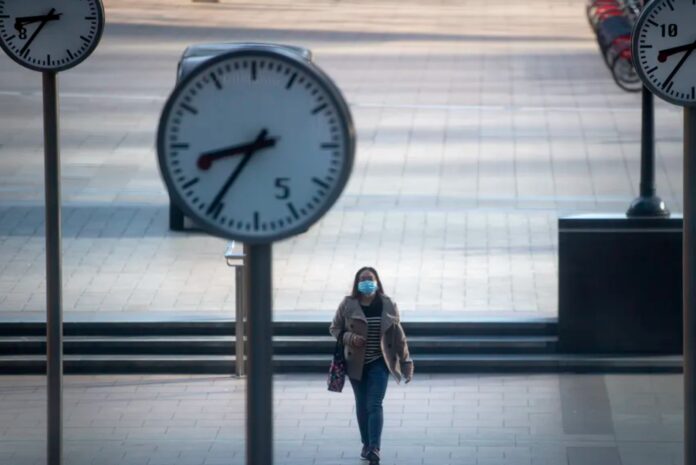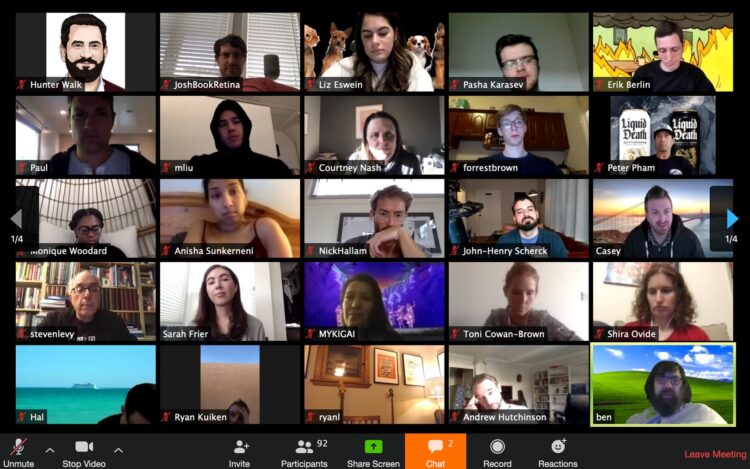
As the coronavirus pandemic broke out many countries around the world resorted to lockdowns to flatten the curve of the infection. This meant confining millions of citizens to their homes, shutting down businesses, and ceasing almost all economic activity. The pandemic has pushed the global economy into a recession which led to millions filing for unemployment benefits in the U.S. alone. While there is no way to tell what the economic damage from the COVID-19 pandemic will be, early estimates predicted that most major economies will lose at least 2.4% of the value of their gross domestic product over 2024.
Just like most of the businesses across the world, Alpha Efficiency has found ways to continue their operations with the use of modern technology, although their employees were obliged to stay at home. Organizations that mostly employ knowledge workers, such as professional services firms, tech start-ups, or banks have found that remote working is possible with a little drop in productivity. However, things have proven to be difficult for those businesses that rely on face-to-face contacts, like cafes and restaurants. These businesses make up an increasingly large share of economic activity in many countries. The effect that the pandemic has on those businesses is probably going to be felt for years to come. Also, many countries have found themselves dependable on lengthy supply chains which led to shortages of vital equipment – PPE and ventilators. This kind of situation will put pressure on governments to increase manufacturing, which will create new challenges when it comes to social distancing.

Many businesses that initially closed are starting their comeback in a slightly different fashion showing us that flexibility is a virtue. This is the concept that was much discussed in the period before COVID-19 struck, but is going to be even more important in the years to come. For most corporations, all depends on how long the lockdown and associated restrictions continue. Those that manage to recover in a couple of months can expect to continue as normal, and those that take longer may be facing major changes.
Nobody can claim that big offices are the thing of the past since people in big cities have been cooped in small places for very long and most are probably eager to go back to work. However, the lockdown may have changed some people’s habits permanently, which can have more effect on cafes and other businesses that have served commuters.
As a technology-based company, Alpha Efficiency is well on its way to carry on as usual. Having exercised remote working as a part of business philosophy, the company has been able to adjust to new circumstances seeing little to no drop in productivity during the crisis. But as sitting in front of a computer all day and having conferences via video calls can be tiring, they will continue to practice face-to-face meetings after the lockdown.

Even with modern technologies, it is extremely hard to replicate office working. Having to juggle child care, shopping, cleaning and rest can bring too many distractions. This is why most business owners are reluctant when it comes to their employees working from home. But since the crisis has forced the situation we may expect a change in attitude and more openness amongst business executives to working away from the office. A younger generation of workers who have grown up with technology and are accustomed to making connections remotely from early childhood can carry that experience with them into the workforce. For those that remote working has not yet played a role in the way company works, it undoubtedly will soon. But businesses will need a reliable way to create meaningful and productive connections with employees scattered around the world if this is to be successful.
As this pandemic continues firms are beginning to look within to see what could be improved and how to maintain crucial continuity of service with their staff working from home. The crisis has already lasted longer than any firm could have predicted, and if it continues even longer or happens again it is important to identify what each firm needs to do to avoid losing money. Creating a people-first continuity plan is key to minimizing risk, providing continuity of service, and maintaining a fragmented work pool. In terms of teams connectivity businesses should:

- Identify key business functions – Determine which people and teams are fundamental for continuing customer connectivity projects.
- Define roles and responsibilities – Creating clear definitions for who is responsible for what will highlight existing gaps and create clarity for teams when they need it most.
- Identify dependencies between teams and functions – Determine how teams will remain connected, access the requiring tooling, and enable customer connectivity projects to continue.
- Identify potential downtime for each critical function – Estimate what downtime will there be before teams are expected to operate as usual if social distancing and travel bans are put in place.
- Simulate the plan – Crisis simulation testing is the only way to ensure the plans and systems put in place are sufficient before they have to be used.
Apart from this, it is also very important to maintain a high level of productivity and work efficiency while being away from your office and colleagues. There are a couple of steps that each company could undertake so their employees would still feel that they are a part of the team:

- Set a team meeting every day at the same time – Ongoing communication is very important in a group remote project. Besides official emails and work updates, more companies are requiring remote workers to hold daily check-ins to discuss daily priorities and work.
- Keep a team chatroom open – The younger generation of professionals grew up in chat rooms and chat programs and feel comfortable communicating in this medium.
- Video conferencing – Companies are increasingly utilizing video conferencing and content-sharing tools to keep employees connected around the world. As high as 94% of businesses say video conferencing increases productivity.
- Technology needs to fuel portability – The job of managers and IT leaders is to enable a more remote workplace. With employees taking devices from place to place, and desk to desk, laptops should serve as constant travel companions.

Final thoughts
The Coronavirus pandemic is affecting every facet of our daily lives, including the way we work. A rapidly increasing number of employers across the world are requiring their people to work from home as part of the efforts to mitigate the spread of COVID-19. This may have a long-lasting impact on how employers view remote-work policies going forward. There is a sense that companies will be more open to an idea or even encourage letting workers work from home once this pandemic is over and things finally turn back to normal, or “the new normal” as we have often heard these days.











